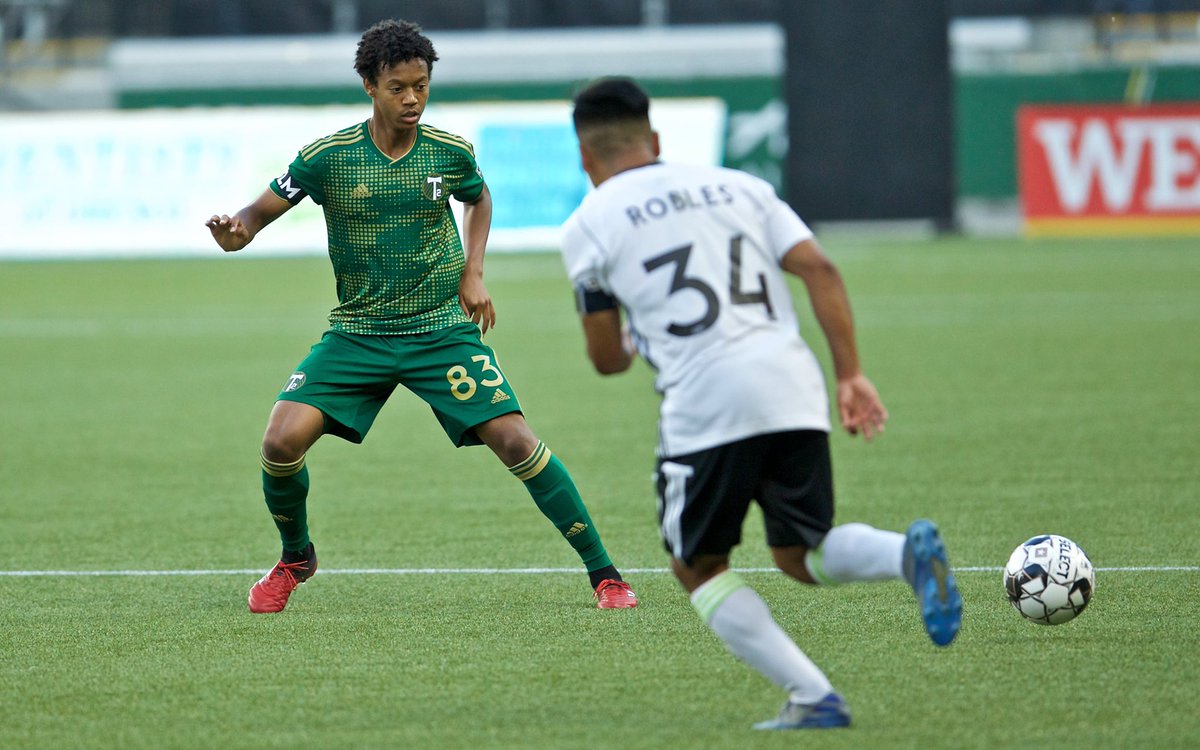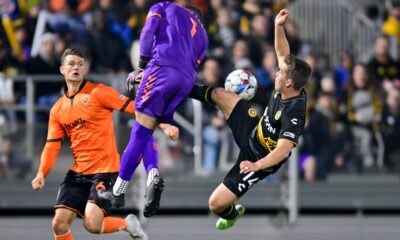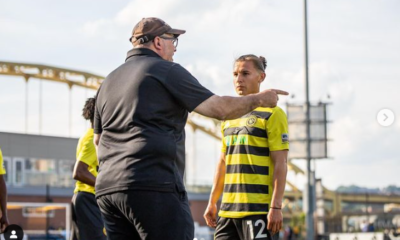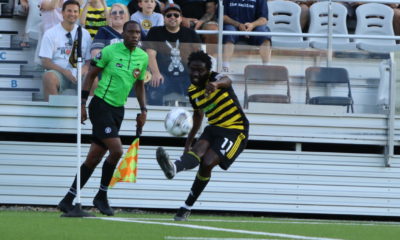
Based on early results in 2020, the past three years, and the team’s current personnel, we can reasonably claim that Pittsburgh Riverhounds are somewhere between a ‘strong’ and ‘average’ USL Championship team.
So the fact that they murdered another USL Championship team, Philadelphia Union II, should give us pause.
The Riverhounds have defeated the Union’s reserve/academy team by an aggregate score of 10-0 over the past two weeks. At no point in either game was the match ‘close’. Union II are currently adrift at the bottom of Group F with just 4 points in 6 matches and a goal differential of -14.
They aren’t the only “Two” team that look hapless in the US Second division. Portland Timbers II are also looking pretty bad to start the year. The Junior Loggers are 0-3-0 with a GD of -11. They’ve looked hopelessly outclassed by older and more experienced opponents from whistle to whistle.
Which is why the USL should probably considering instituting promotion and relegation between USL Championship and USL League One, as soon as possible.
The specific situations of Union II and Timbers II are fairly instructive to the ‘how’ and ‘why’ of pro-rel.
Union II have been a decent-if-underwhelming side since the club’s inception as Bethlehem Steel in 2016. Over their five seasons, the team has had a winning record just once, in 2018. That team was just loaded with talent: Brenden Aaronson, Oliver Mbaizo, Anthony Fontana, Fabian Herbers, Derrick Jones, Mack McKenzie, and John McCarthy are all now playing in Major League Soccer. But those departures, plus losing Santi Moar to Phoenix Rising has left Union II with an inexperienced team that just has not been up to the level of USL-C opponents. In 2019 the team had an 8-19-7 record with a -29 GD.
Timbers 2 have also been an underwhelming football club throughout their history. In five seasons, they’ve compiled a winning record just once, in 2018. Their overall W-L-T record is 50-81-24. A better instructive measure for the Timbers, though, is their academy’s record of producing MLS players. It is not good. The Timbers first-ever Homegrown signings were Brent Richards and Steven Evans, who signed in 2012 and 2013. Richards played just 201 minutes at the MLS level, while Evans never made it to the MLS level. More recent homegrown signings Marco Farfan, Eryk Williams, and Blake Bodily have shown more promise. However, Portland has produced fewer HGPs than any other MLS team besides the most recent league additions like Atlanta, Nashville, NYCFC, and Minnesota.
If the point of MLS “two” teams is to develop talent, the best way to do that is by provide the appropriate level of challenge for the players. It is worth serious attention to consider whether having 16 and 17 year-olds get hammered by experienced professionals week after week is likely to aid in the development of those players, or whether the physicality and the mental exhaustion from enduring frequent defeats isn’t counterproductive to the effort.
Now that the USL has started a lower-tiered league and has the beginnings of its own internal pyramid, it is time to start using it. If a team finishes last in its respective conference (East or West), it should be sent down from the USL Championship to USL League One. This includes all teams, but would most benefit the younger “two” teams the most.
While relegation follows an obvious logic, promotion is slightly more complicated.
Many of the teams in USL League One have chosen to play or begin life in that division due to the financial expectations the league places on teams. Owners are expected to have $10 million in net worth, a stadium that seats 3,500 fans, and operate in a market of 150,000 to one million people. USL Championship teams need more operating capital, the financial resources to spend more on players, and are expected under US Soccer Division II regulations to have a stadium that seats at least 5,000 people.
In other words, while relegation might help a struggling USL team to find its foot, promotion might be a financial burden for small teams. Richmond Kickers, for instance, after years of financial struggle, voluntarily chose to drop down from USL-C to USL-1. In the event they tear through their division and are crowned champions, they may not want to be promoted.
That’s why I would propose that winning the USL League One Cup gives the winner the right, but not an obligation, to be promoted to the USL Championship.
In most foreign leagues there is an attempt to balance the number of teams in each division, but this is far from the case in USL, where the Championship has 35 teams while League One has just 12 teams. So in the event that teams chose to drop down but nobody chooses to be promoted, it would actually create better balance in the US soccer pyramid. In fact, USL could comfortably relegate teams without a single promotion for a decade, without it having any significant negative effects. In fact, the rebalancing could serve to make both leagues more competitive, and more balanced.
Union II won their first game of the season, 3-2, on Wednesday night, so one could argue that I’m jumping the gun – that the Junior Unioneers aren’t nearly as bad as I might have you believe. And that might be true. Time will tell.
But that doesn’t invalidate my point: the USL is a large and diverse league, with very rich teams willing to build winners and some less-well-outfitted teams just hanging on, season after season. It would behoove the league to allow perennial cellar-dwellers an escape hatch to a division where they might better thrive and develop their young talent for the future.
…
Image care of Portland Timbers 2 via twitter




















